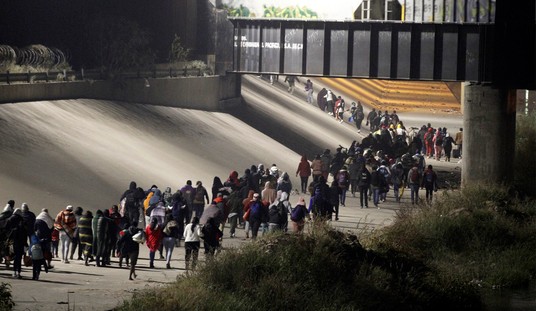The United States has the world’s best healthcare delivery system, the most advanced pharmaceutical research laboratories, the largest investment in public and private clinical research, and the best public-private relationship focused on developing new treatments for diseases. Not only the federal government but also the individual states have well-funded and comprehensive public health organizations. All of these resources are being marshaled to control and combat the Wuhan virus.
If any country in the world can rapidly develop an effective vaccine and effective treatments while developing and implementing plans to isolate the disease and slow if not stop its spread, it is the United State of America. But what about other countries around the world, particularly in Africa, where public healthcare is meager to virtually non-existent? One could easily argue that the Dark Continent is in the early stages of an unreported disaster. Here is a current report:
As of 11 March, the coronavirus pandemic (Covid-19) is now in 114 countries worldwide.
The World Health Organisation identified 13 countries in Africa as being at risk of the coronavirus infection. These countries include Algeria, Angola, Cote d’Ivoire, the Democratic Republic of the Congo, Ethiopia, Ghana, Kenya, Mauritius, Nigeria, South Africa, Tanzania, Uganda, and Zambia. They either have direct links to China or handle a large volume of travel to China. Effective screening mechanisms have been introduced at all major airports of these countries.
While the total number of people infected is relatively minuscule at this point (a few dozen) and the number of deaths very low (just a few), there is a high probability that the incidence of the virus is far more widespread than health officials in African countries are able to efficiently detect and report. Let us examine why this is likely to be the case (besides the inadequate public health capabilities in most countries on the African continent).
The culprit, of course, is Communist China. The Chinese have a long-term plan to achieve worldwide economic dominance, have broadcast it for the world to see, and have diligently pursued it to the maximum, especially in Africa. That strategy is called One Belt One Road (OBOR), or the Belt-Road Initiative (BRI), which is a collection of development and investment initiatives stretching from East Asia to Europe that would significantly expand China’s economic and political influence, if not dominance within the region. A companion maritime component, the “Maritime Silk Road,” was developed that included East Africa:
China unveiled the concept for the Twenty-First Century Maritime Silk Road (MSR) in 2013 as a development strategy to boost infrastructure connectivity throughout Southeast Asia, Oceania, the Indian Ocean, and East Africa. The MSR is the maritime complement to the Silk Road Economic Belt, which focuses on infrastructure development across Central Asia. Together these initiatives form the One Belt One Road (OBOR) initiative designed to enhance China’s influence across Asia.
Since 2013, the Chinese have invested over $1.2 trillion in developing over 20 ports in Africa. The investments are in the form of long-term loans to essentially impoverished countries that the Chinese ultimately foreclose on when those countries cannot repay their debts. This scheme is called “debt leveraging” and allows the Chinese to take over ports and other transportation infrastructure in African countries on 99-year leases the African countries default on their loans. Pretty slick, right?
A major part of the plan has been the development of the Chinese shipping industry, which is a transmission belt for Chinese workers, tourists, and manufactured goods to the 55 countries in Africa. The Chinese shipping industry is robust and growing, as maritime trade routes are vital to sustainment of Chinese industrial growth through the supply of raw materials (from Africa) and oil (in particular, from Iran).
As part of the Chinese long-term plan (and debt-leveraging), Djibouti has become the home to at least 10,000 PLA troops who hold live-fire exercises there to intimidate the rest of the world. How many Chinese infected with Wuhan virus are there in Djibouti these days?
As an extension to their Maritime Silk Road strategy, the Chinese have been building a “New Silk Road” across the continent of Africa for years. The planned mainline train track leads from Port Sudan on the Red Sea all the way to Dakar, Senegal, on the Atlantic Coast. That’s the 4,700 miles from Africa’s east coast to its west coast.
The development of Port Sudan is one entryway to all of Africa. China is engineering and financing electric generation plants in eastern Sudan – to power its railroads (electric!). The first section of the trans-African line runs from Port Sudan to N’Djamena, Chad. Once a rail line has been shot across the continent, north and south lines down each coast might swiftly follow, bringing Chinese goods to a billion new customers whose countries will repay the Chinese with their mineral wealth. There are thousands of Chinese hard at work all across Africa delivering on Xi Jinping’s grand plans!
What does all this activity mean? That there have been tens of thousands of Chinese running all over Africa for years – including since the outbreak of the Wuhan virus last November. We have already seen virus hotspots erupt in Iran and Italy, both of which have extensive economic ties with China (Iran, for illicit oil trading, and Italy, as the European hub of the Chinese Maritime Silk Road). It is no surprise that those two countries together have nearly 30,000 cases of the Wuhan virus!
There have been far more Chinese to-and-from Africa over the past few months than to-and-from Italy and Iran. The likelihood that the current reports of low numbers of infected people and deaths in African countries are correct is virtually nil, in my opinion, especially given the state of the disease monitoring, detection, and testing in those Third World countries. I shudder to think what the real numbers are, as well as of the inadequacy of public health organizations to cope with the looming tragedy sure to unfold in the coming weeks.
Chinese debt-leveraging is merely an economic disaster for African nations; the Wuhan virus is a matter of life and death. China is an existential threat to more countries than just the United States.
The end.
[H/T: a 95-year-old Navy master chief]













